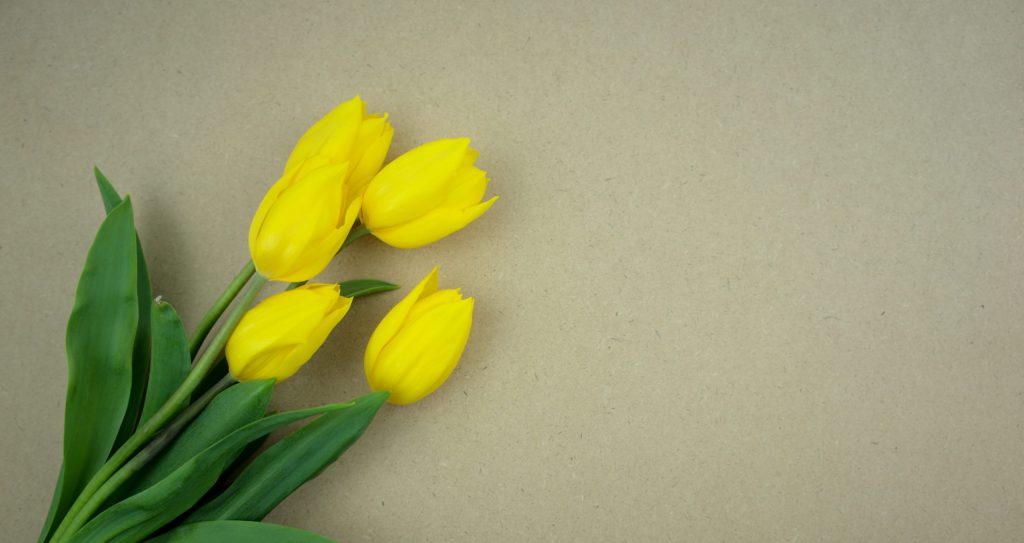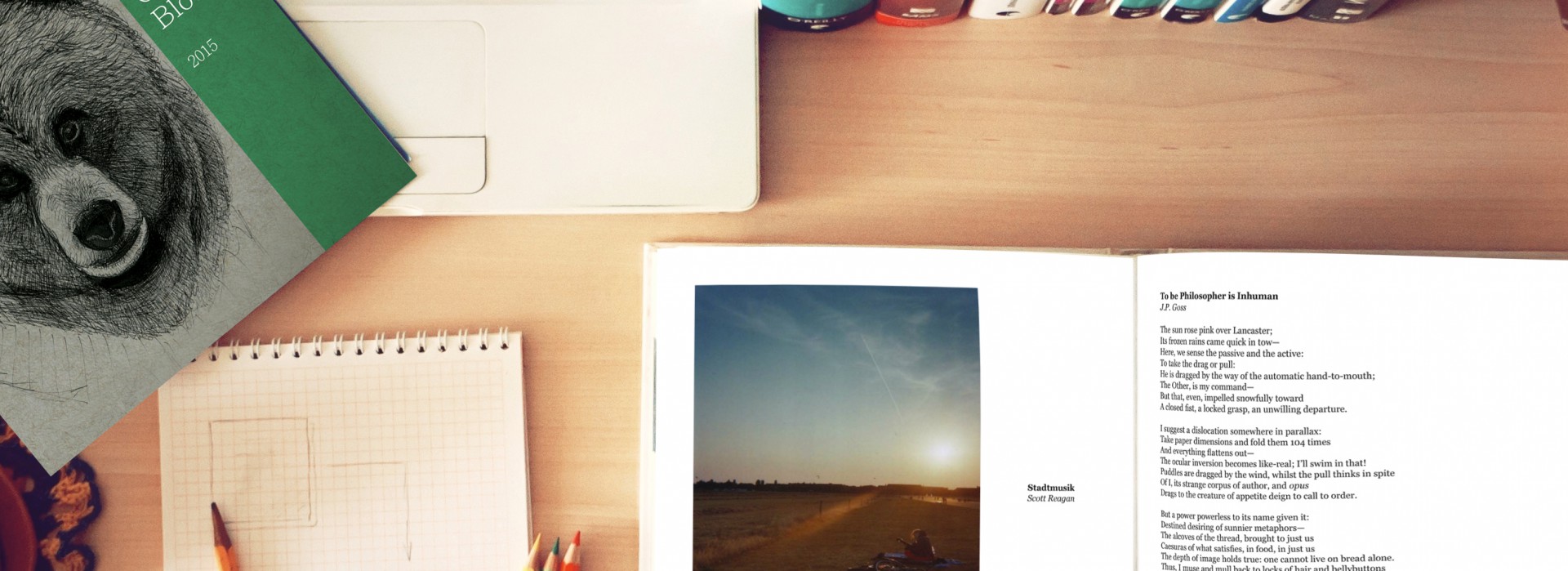reviewed by Katherine Buerke

Above Amanda Gunn’s poem “Happy and Well“ is an image of four bright yellow tulips on a gray background. Often used as a symbol of hope and happiness, yellow tulips act as an ideal that the characters in the poem strive, yet fail, to achieve. The story of a woman’s relationship with happiness, “Happy and Well” explores the trials and tribulations of being human and finding happiness. It is the portrait of a woman reaching for happiness but fearing its touch.
The poem presents the difficulty of seeing other people happy when in misery. The narrator fears her “most beautiful friend”—a happy friend—whose smiling teeth look “poised to bite.” The narrator’s fear in the presence of happiness and beauty indicates the pain people feel in the face of something they can’t obtain. The narrator “can’t look” at this friend who “laughs uproariously in every single portrait,” but she often looks herself in the mirror and sees “some kind of sick.” Sometimes it’s easier to accept misery than see happiness. Gunn suggests that seeing others happy while you are in distress is like being “thrown forward”—discombobulating. It’s something “hard to understand.” She asks, “What must it feel like…” to be happy and well?
This aversion to looking at happy people presents itself repeatedly throughout the poem. The narrator’s mother can’t deal with her happy children, instead “hiding in the bathroom.” However, no one blames the characters for thinking such thoughts. The characters can express their emotions on the page, and Gunn invites the reader to approach happiness through the eyes of those who have forgotten how to deal with it. The description of struggling characters is simultaneously beautiful, heartbreaking, and peaceful.
The poem is formatted into eight sections numbered with roman numerals. Each section reads like a chapter in the narrator’s life. The first and last sections take place in the present moment, framing the poem and showing how far the narrator has come. Sections iv, v, and vi explore the narrator’s childhood and relationship with her mother. In section iv of the poem, the yellow tulips reappear as the narrator’s mother “paints yellow tulips over and over again.” Her attempts to paint these symbols of happiness demonstrate her inability to attain joy. Her daughter inherits this struggle as a “new rubric”—a set of guidelines to follow. These flashbacks show us that the narrator’s precarious mental state is intergenerational.
Gunn avoids misrepresenting mental illness or depicting it as hopeless. The narrator and her mother represent one side of a family burdened with mental illness, and their struggles are powerfully delivered. But an aunt and uncle are also introduced, depicting a different side of life. The aunt and uncle of the story, described as “laughing and abundant,” share their struggles with happiness. Allusions to children they “lost, irrevocably” make their current happiness all the more powerful, as they had to overcome challenges.
Gunn’s touching description of human experiences feels like a warm hug for those experiencing mental health struggles. Even the aunt and uncle must deal with powerfully sad emotions, “but only sometimes.” Referencing a life that is only sometimes happy and sometimes sad reminds the reader that depression doesn’t have to be permanent. The possibility of happier times suggests a way to grieve that allows space for remorse as well as healing. Even the downtrodden narrator tentatively declares, “I think I might be happy.”
I hope you are.
Katherine Buerke is a freshman English and Creative Writing Double major at Lebanon Valley College. She hopes to pursue a career in publishing or freelance writing after college.


